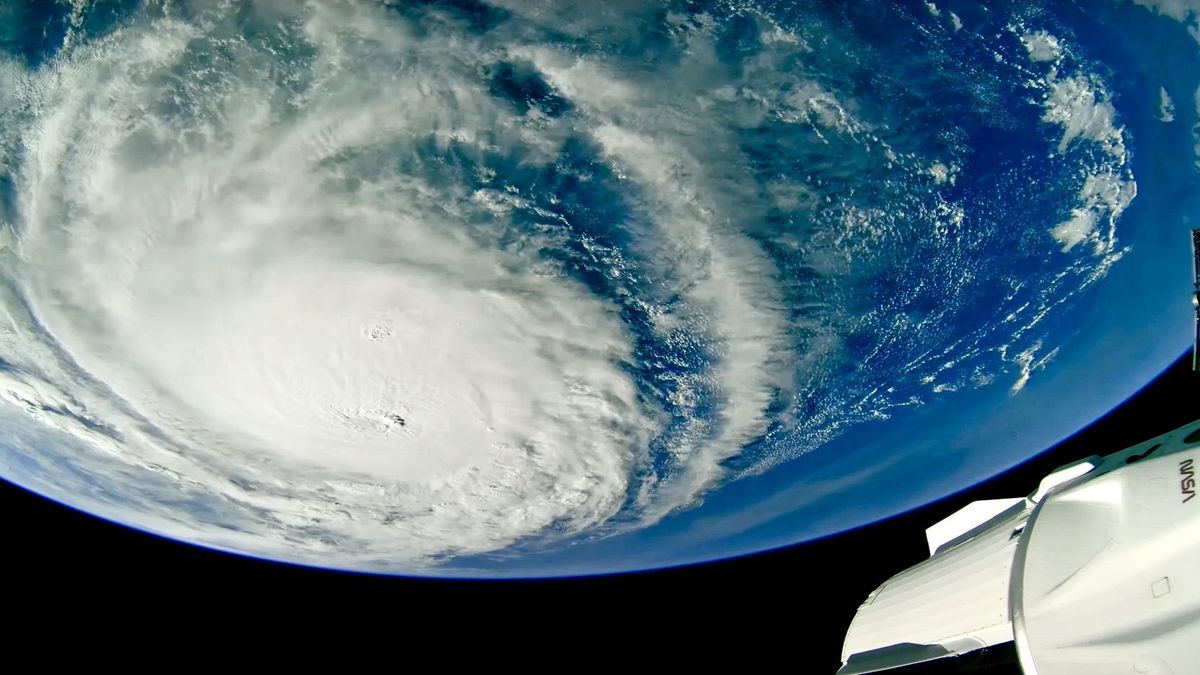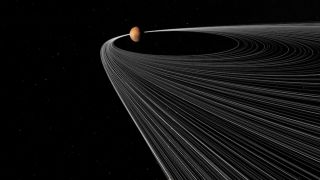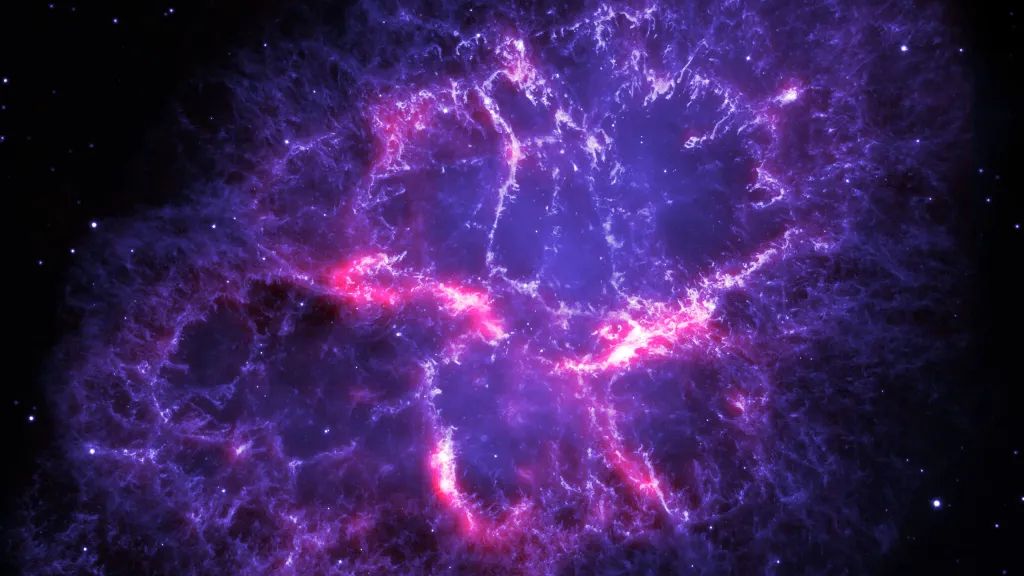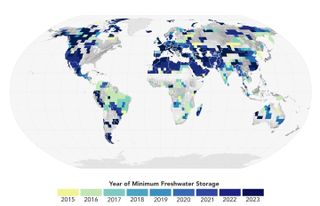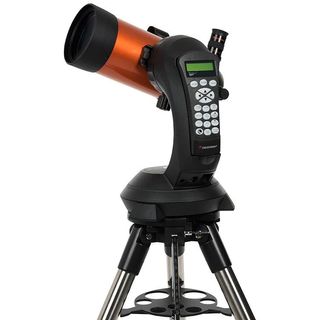The USS Cerritos crew has encountered plenty of dimensional fissures this year, but the latest rupture in space and time carries the most unlikely of guests to the Alpha Quadrant. In “Lower Decks” season 5 episode 7, “Fully Dilated”, Captain Freeman and her crew encounter a purple version of the USS Enterprise-D — and there are much bigger questions to answer than whether the carpets match the hull. Spoiler warning! Caution advised if you’re yet to watch this week’s episode. Lieutenants Beckett Mariner, D’Vana Tendi, and T’Lyn are sent on…
Read MoreCategory: Solar System
Our solar system
Save $980 on one of Unistellar’s best telescopes this Black Friday
Fancy owning one of the best telescopes on the market? The Unistellar eVscope 2 is reduced by 20% on Unistellar’s website this Black Friday, totaling a saving of $980 but this deal won’t last forever. You can get the Unistellar eVscope 2 on sale right now at Unistellar for $3919. In our Unistellar eVscope 2 review, we praised how wonderful the telescope looks thanks to its sleek tube and modern, understated design. We also think it’s a great choice for astrophotographers as the telescope is capable of taking stunning photos…
Read MoreNear Space Labs launches fleet of AI-powered balloon robots to track Earth climate risks
Near Space Labs, a New York-based startup, has deployed a network of high-altitude balloons equipped with advanced robotic cameras to capture high-resolution images of disaster-prone neighborhoods across the United States. With this enhanced imagery, the startup said it aims to accelerate the work of insurance companies that rely on aerial data to assess property risks and respond to damage caused by extreme weather events. The newly deployed balloons are outfitted with AI-enabled robots called “Swifts,” which are capable of capturing imagery with a resolution of 7 centimeters (2.76 inches) per…
Read MoreAct fast! Hulu and Disney+ bundle for just $2.99 a month for a year with this Black Friday deal
Top Streaming Offers Here, you can find the best Black Friday streaming deals as several services offer big discounts ahead of the annual sales event. It’s always worth checking out what content is available where before choosing your next subscription, so it could be worth checking out our best sci-fi movies and TV shows on Disney Plus, Amazon, Netflix and Paramount Plus guides. Below, you’ll find the best Black Friday streaming deals as there are huge discounts, bundles and free trials available. You can take a look at our Black…
Read MoreMars may have made its 2 moons by ripping an asteroid apart
Computer simulations suggest that Mars’ puzzling moons, Phobos and Deimos, may have been formed from debris created when a large asteroid wandered dangerously close to the Red Planet. This new model proposes that Phobos and Deimos resulted from the wreckage of a larger asteroid that wandered too close to Mars and crossed its Roche limit — the distance at which gravitational tidal forces emanating from the planet became too great and tore the asteroid apart. “It’s exciting to explore a new option for the making of Phobos and Deimos —…
Read MoreWe love this Celestron motorized telescope and it’s $300 off for Black Friday
Are you serious about skywatching, or upgrading from your current, aging setup? Thanks to Amazon’s Black Friday sale you can save $300 on the Celestron NexStar 8SE, an absolute powerhouse of a motorized telescope that still manages to be beginner-friendly. Get the Celestron’s Nexstar 8SE motorized telescope on sale right now at Amazon for $1299. We rate the Celestron NexStar 8SE as the best motorized telescope out there and the absolute best telescope for seeing planets. It boasts a light-friendly eight-inch aperture, an 80-inch focal length and its fully-automated mount…
Read MoreGet $80 off this computer-aided Celestron telescope for Black Friday
Want a telescope that takes the work out of finding objects? Or maybe you’re buying for a beginner and want to give them a hand? This Celestron 114LCM Newtonian telescope is just what you need, and it’s $80 off at Amazon this Black Friday. This Celestron 114LCM Newtonian telescope is on sale now at Amazon for $359.99. Not only does the Celestron 114LCM function as a regular telescope, but its computerised GoTo mount will automatically find and track objects in the night sky, taking much of the work out of…
Read MoreStrange ‘zebra’ patterns are coming from the Crab Nebula — this physicist finally figured out why
Historical records from around the world describe a bright star appearing in the sky in the year 1054. Today, astronomers are confident that what our ancestors were seeing was, in truth, a star that had gone supernova. But this wasn’t just any supernova. It was a supernova that would eventually lead to the formation of the Crab Nebula — a collage of interstellar gas and dust illuminated by the energy expelled during the death throes of a rapidly contracting nuclear furnace.The star in question would eventually become a pulsar —…
Read MoreNASA satellites reveal Earth’s continents are getting drier
The amount of freshwater found on our planet has dropped significantly in the last decade, NASA satellites have found. An international team of scientists reviewed observations taken by the Gravity Recovery and Climate Experiment (GRACE) satellites operated by NASA, the German Aerospace Center and the German Research Center for Geosciences. The data collected by GRACE revealed that beginning in May 2014, there was a plunge in Earth’s freshwater supply, and the planet has still not recovered. The researchers suggest that this evidence could also mean Earth is undergoing a drier…
Read MoreThe moon eclipses bright blue star Spica this week. Here’s how to see it
Earlier this month, the planet Saturn was eclipsed by the moon as seen from Central America, northwest portions of South America, as well as central and southern Florida. This event, known as an occultation (derived from the Latin word occultāre, which means “to conceal”, can be a startling spectacle, especially if it involves a bright star. But unlike a planet which can take up to a minute or two to be completely covered by the moon, a star, in contrast, appears to creep up to the moon’s limb, hangs on…
Read More
